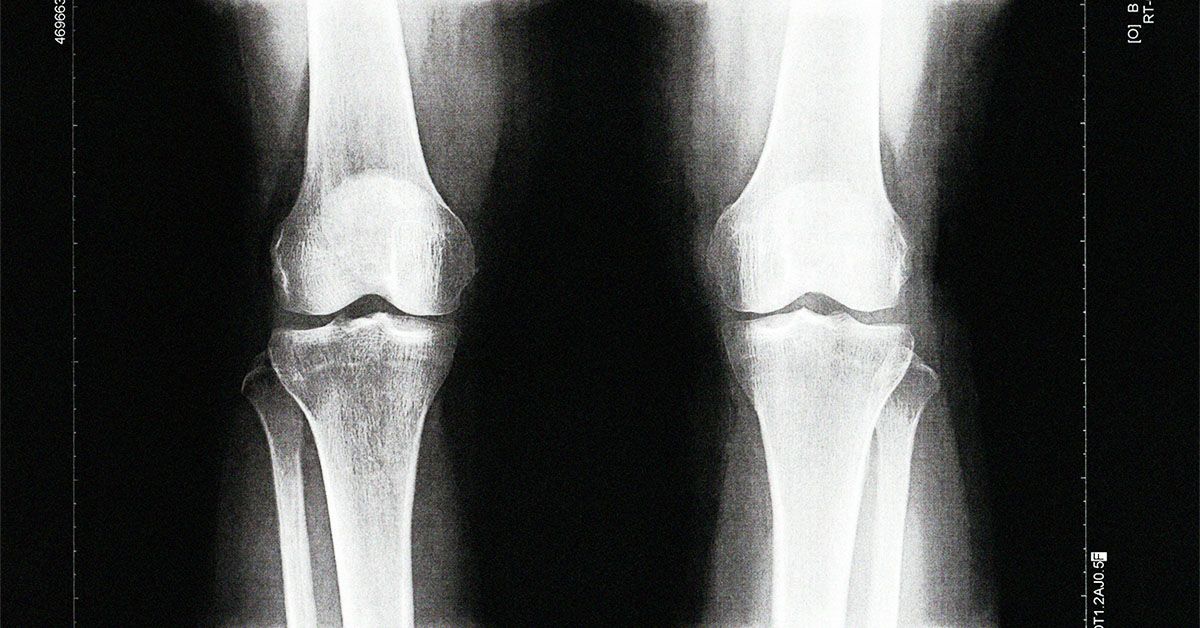- Osteoarthritis is a common condition and is typically diagnosed on X-rays after someone experiences pain in a joint.
- Researchers from Duke University conducted a study on diagnosing osteoarthritis in the knee and found biomarkers in the blood that can predict the development of the condition.
- The researchers also learned that the biomarker test can predict osteoarthritis up to eight years earlier than the condition can be detected by X-ray.
Osteoarthritis (OA), a degenerative joint disease, can affect almost all joints. When someone develops OA, the protective tissues in their joints break down, which causes pain.
While there is no cure for OA, researchers are looking for enhanced treatment and early detection of the disease. Researchers from Duke University, North Carolina, recently studied blood serum from a group of women to see if they could identify blood biomarkers that indicate the development of the disease.
The researchers found serum biomarkers that they say can accurately serve as a predictor for OA in the knee and can predict it well before the disease shows up on X-rays.
The study appears in the journal Science Advances.
According to the
OA occurs when cartilage and other tissue in the joints begins degrading. As a result, there is limited protection between the bones, which causes them to rub together and cause pain.
The
OA is irreversible, but people can manage its progression through weight loss, exercise, and medications such as nonsteroidal anti-inflammatory drugs (NSAIDs). These NSAIDs include over-the-counter drugs such as aspirin and prescription drugs such as celecoxib (Celebrex).
The authors of the present study pointed out that there has been a rise in OA worldwide, and said they wanted to focus more on early detection of OA.
By the time someone is diagnosed with OA via an X-ray, they are already experiencing degradation in their cartilage and are likely to be experiencing pain. If it were possible to detect OA before the damage is done and it shows up on the X-ray, the authors think it would be possible to introduce some interventions to keep the disease from progressing as quickly.
The scientists have worked on developing molecular biomarkers of OA in the past. For the present study, they analyzed a group of women whose data was available via the Chingford 1,000 Women study which was designed to study musculoskeletal disease.
The researchers selected a cohort of 200 white women between the ages of 45 to 65. The scientists only considered women who did not report a history of rheumatoid arthritis, gout, or a knee injury that caused them to have to rest for 1 week or longer.
Half of the group included women who developed OA in their knees over the 10 years of follow-up, and the other half of the group was the control group with women matched by age and BMI (26 on average).
Throughout the years, the women participated in the Chingford study, and they provided blood samples and X-ray readings.
The researchers used a multiple reaction monitoring assay of 165 peptides to test the serum samples from years 2 and 6 of the study. From that set, they were able to narrow it down to as few as six biomarkers that consistently predicted OA across all analyses.
When using these biomarkers, the scientists accurately predicted the development of OA as early as 8 years before the condition showed up on X-ray imaging.
“The identification of sensitive biomarkers to identify early OA, before development of overt structural damage, has the potential to greatly reduce the medical burden of disease,” the authors report.
The biomarkers predicted OA development with a 77% accuracy, which the study authors note was superior to predictions using BMI (51%) or knee pain (57%) to develop OA.
The scientists also discovered that the genes linked to these biomarkers were active in the cartilage and synovium of the knee joint, indicating their importance in understanding OA.
While the study results are promising, there are some weaknesses. Abayomi Ogunwale, MD. MPH, an assistant professor and family medicine physician with UTHealth Houston, noted some weaknesses to Medical News Today.
“This study was designed as a case-control study which does not provide the highest level of clinical research evidence due to biases inherent to the design,” explained Ogunwale. “One of these weaknesses is the risk of selection bias.”
Additionally, the study is not diverse in terms of gender or race.
“The sample size here is also small, and all participants are women,” Ogunwale pointed out. “It will be difficult to generalize the findings to the diverse population at risk of knee osteoarthritis, especially men.”
Steve Yoon, MD, a board certified physiatrist and director of Clinical Regenerative Medicine at Cedars-Sinai Kerlan-Jobe Institute in Los Angeles, spoke with MNT about the study.
“Because osteoarthritis is incurable, any ability to predict the occurrence of this disease early in an individual could possibly help the future quality of lives for millions of people worldwide,” said Yoon.
While Yoon is optimistic about the study findings, he pointed out that this type of test will not be put into use immediately.
“Tests like these are promising but are not likely going to be available for public use for a while,” Yoon cautioned. “One of the best ways to approach life is to continue engaging in healthy living – optimizing diet and moderate exercise has been linked in many scientific studies to help prevent and positively affect many diseases.”
Timothy Gibson, MD, a board certified orthopedic surgeon and medical director of the MemorialCare Joint Replacement Center at Orange Coast Medical Center in Fountain Valley, California, also spoke with MNT. He also emphasized the importance of the study findings.
“The development of a blood test for predicting knee osteoarthritis before structural damage appears on X-ray is very significant,” noted Gibson. “Early identification of individuals at high risk of developing knee osteoarthritis gives opportunity to potentially provide early intervention and potentially slow or halt progression of the disease.”
Gibson also said if someone is at risk for developing knee OA, there are some things they can do to help, including “controlling weight and maintaining or improving quadriceps and leg strength.”
“The knee feels the force of about four times body weight with each step due to what is known as a joint reactive force,” said Gibson. “Even losing 10 pounds makes a huge difference in the force across the knee with each step.”
“For people living with osteoarthritis, this does not mean much in the short term. But the hope it inspires – for earlier diagnosis, treatment, development, and limiting complications – is heartwarming.”
— Abayomi Ogunwale, MD
Ogunwale said this type of testing could impact the future of treating osteoarthritis.
“In coming years, this development will translate to more sensitive and non-radiologic tests for osteoarthritis prediction, diagnosis, and hopefully, development of therapeutics and biologic agents to interrupt the inflammatory process preceding clinical symptoms,” he noted.













